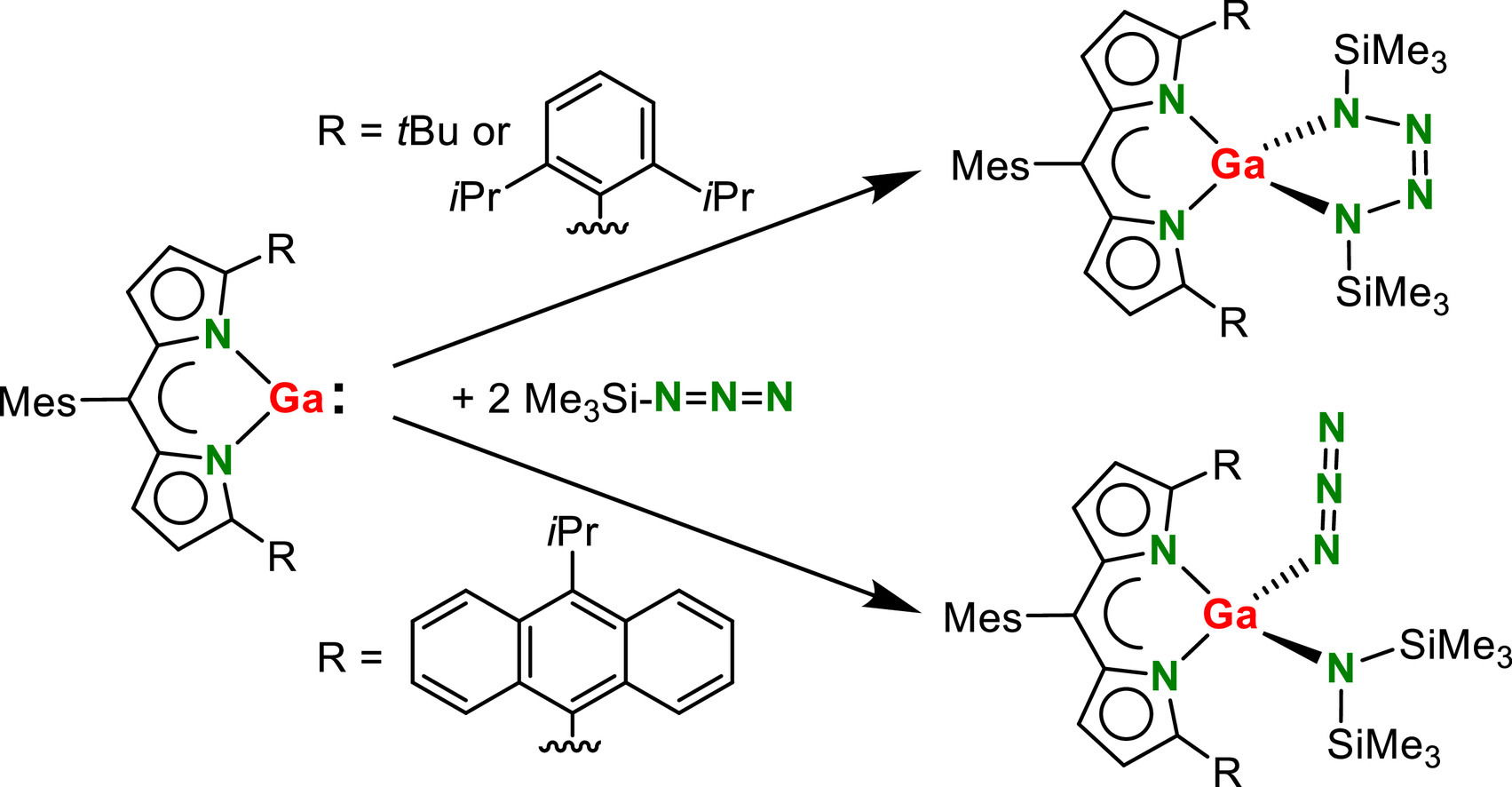Selectivity control in the reactivity of dipyrromethene gallium(I) complexes

Following the recent isolation and structural characterization of the first low-valent GaIcomplex with a monoanionic dipyrromethenide ligand (DPM), herein (DPM)GaIcomplexes with bulky aryl-substituents in the 1- and 9-positions are described. This study focusses on three DPM ligands with mesityl substituents (MesDPM), 2,6-diisopropylphenyl substituents (DIPPDPM), or 10-isopropyl-9-anthracenyl substituents (iPr-AnthDPM); the synthesis to the latter unknown ligand is described. The precursors (RDPM)GaI2 were obtained by reaction of the corresponding alkali metal complexes (RDPM)M (M = Na or K) with GaI3 and characterized by X-ray diffraction. Crystal structures show the efficient shielding of the GaI2 unit by two flanking aryl groups. In a subsequent reduction step, (DIPPDPM)GaI and (iPr-AnthDPM)GaI have been isolated. Comparison of the crystal structure of (DIPPDPM)GaI with that of a similar β-diketiminate GaI complex shows that the Ga center in the DPM complex is well shielded by flanking DIPP substituents. Despite this favorable ligand geometry, isolation of the corresponding (DPM)Ga=N(SiMe3) complexes failed due to further reaction with a second equivalent of Me3SiN3. This resulted in clean formation of the tetrazagallole complex (tBuDPM)Ga[N4(SiMe3)2] and the amide/azide combination (iPr-AnthDPM)Ga(N3)N(SiMe3)2, both structurally characterized by X-ray diffraction. Selective formation of both complexes shows that the substituents in the DPM ligand effectively control the course of the reaction. DFT calculations show that independent of the substituent (tBu, DIPP, or iPr-Anth) the amide/azide combination is always circa 20 kcal/mol more stable than the tetrazagallole product. The latter must therefore be formed by kinetic control.